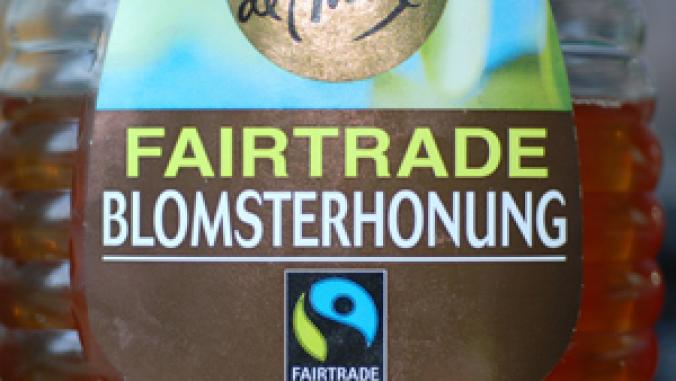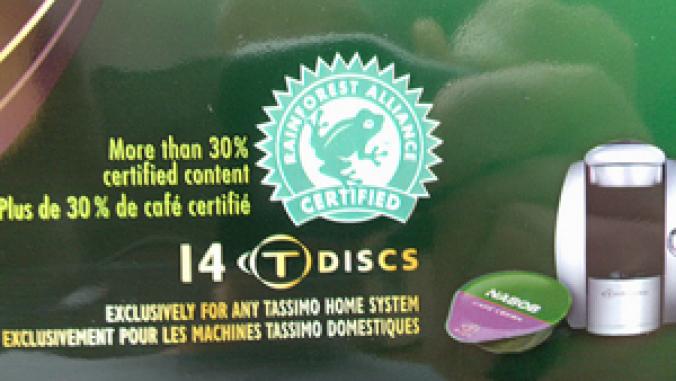Using Sustainability Labels to Drive Performance
<p>It seems like a new sustainability certification or standard is announced weekly. As these increase, along with corresponding logos and taglines, so too have questions about their validity and meaning for stakeholders.</p>

Images CC licensed by Flickr user kafka4prez http://www.flickr.com/photos/kafka4prez/sets/72157594492591106/
It seems like a new sustainability certification or standard is announced weekly. As these increase, along with corresponding logos and taglines, so too have questions about their validity and meaning for stakeholders.
As GreenBiz.com has reported, current research tells us that as labels proliferate consumer confusion is increasing and individual labels are incrementally losing value. BBMG evaluated consumer recognition and purchase influence for an array of labels. The recycling symbol, Energy Star and USDA's Certified Organic seal topped the charts, with a steep drop in consumer resonance for others on the list.
It's certainly important to understand how efforts to communicate sustainability practices resonate with stakeholders and support business goals (See GreenBiz's recent webinar on this.) Yet, there's another critical question to explore: How might labels, certifications and standards play in driving higher-level sustainability practices? We know we've got a long way to go toward sustainability, and some imminent issues to rectify. Why not seek, and promote, standards and certifications that drive significant improvements that really push the envelope and achieve what's needed to sustain society, the economy and the planet?
 How might a business determine what standards to shoot for? Aligning with sustainability priorities is a good start, so long as those address an enterprise's biggest impacts, needs and opportunities. This will maximize positive impact where it's most needed, for the business, stakeholders and the environment. With a well-developed strategy, these will align with consumer concerns, advancing both sustainability and marketing goals.
How might a business determine what standards to shoot for? Aligning with sustainability priorities is a good start, so long as those address an enterprise's biggest impacts, needs and opportunities. This will maximize positive impact where it's most needed, for the business, stakeholders and the environment. With a well-developed strategy, these will align with consumer concerns, advancing both sustainability and marketing goals.
As an example, manufacturers of household cleaning products might focus on certifications and standards around non-toxicity and biodegradability, while paper products companies would be wise to hone in on post-consumer recycled content and non-toxic processing. This isn't to say that lower-impact areas need not be a concern, just prioritized accordingly. Household cleaning products companies that label and promote recyclable packaging in the absence of any certification related to non-toxic ingredients could well look like they're greenwashing.
 When specific areas are identified, a good next step is to identify applicable standards and certifications and choose those with the greatest real impacts (inside and outside the business), and that lie above current performance and the status quo are. Companies can do side-by-side comparisons for various standards and talk to peers. As a simple example, a 100 percent recycled content label effectively addresses both environmentally preferable sourcing and end-user recyclability, adding value over a recyclable label alone.
When specific areas are identified, a good next step is to identify applicable standards and certifications and choose those with the greatest real impacts (inside and outside the business), and that lie above current performance and the status quo are. Companies can do side-by-side comparisons for various standards and talk to peers. As a simple example, a 100 percent recycled content label effectively addresses both environmentally preferable sourcing and end-user recyclability, adding value over a recyclable label alone.
More comprehensive, third-party verified certifications will also confer wider benefits than their simpler, looser counterparts. As an example, USDA Organic goes beyond "all natural" to prohibit synthetic agricultural chemicals and ingredients, yielding greater benefits around emissions reduction, clean air, water and soil, and farmworker health. It's also governed by the USDA, while natural remains largely unregulated -- providing consumers with the credibility they want, need and deserve.
 Shooting for standards above current performance needn't mean that a label can't be used immediately, which would defer the communications opportunities that companies and stakeholders value. It may just mean that only some products, brands, product lines, facilities or other subset of a business would qualify. From here, a company can map out a plan to scale up and meet the criteria for a given label across the board.
Shooting for standards above current performance needn't mean that a label can't be used immediately, which would defer the communications opportunities that companies and stakeholders value. It may just mean that only some products, brands, product lines, facilities or other subset of a business would qualify. From here, a company can map out a plan to scale up and meet the criteria for a given label across the board.
This approach is not uncommon with companies using the Fair Trade Certified or Rainforest Alliance labels. Many sign on with a limited number of Fair Trade items or a lower percentage of Rainforest Alliance ingredients and build up.
{related_content}Communicating the scale-up strategy is as important as explaining a label's meaning and what current practices it represents. Doing so will help address gaps in consumers' understanding of labels, and will ensure stakeholders understand the extent of a company's commitment past current certification levels.
As a final consideration, one must also ensure a given label is founded in good governance policies such as third-party verification, transparency, non-conflict of interest and broad stakeholder involvement in development. The Consumers Union's eco-labeling site reviews several hundred labels along these lines.
Viewing certifications and standards as an opportunity to set and meet stretch goals is essential to create more sustainable business models that address our social, environmental and economic challenges with an appropriate scope and scale. It offers a transparent way to stay accountable over the long term, as well as a solid basis for communicating with integrity in an era of increasing concerns about greenwash. It also stands to help filter our standards and certifications that represent little more than business as usual, helping restore and build consumer confidence in this key area. By doing the right thing for the right reasons with real integrity, the rest of the sustainability labeling puzzle will fall into place.
Melissa Schweisguth is director of membership development and education for the Food Trade Sustainability Leadership Association and an independent consultant on CSR/sustainability and marketing/communications. She also sits on the advisory board for Big Tree Climate Fund and maintains a blog, "Full Circle Impact."
Images CC licensed by Flickr user kafka4prez.





